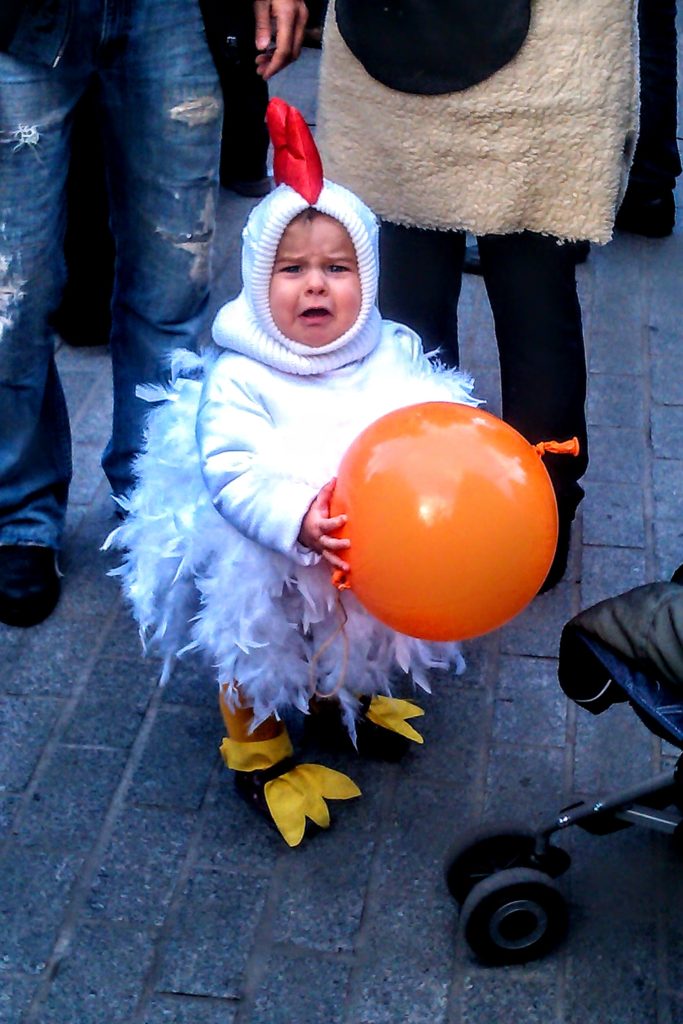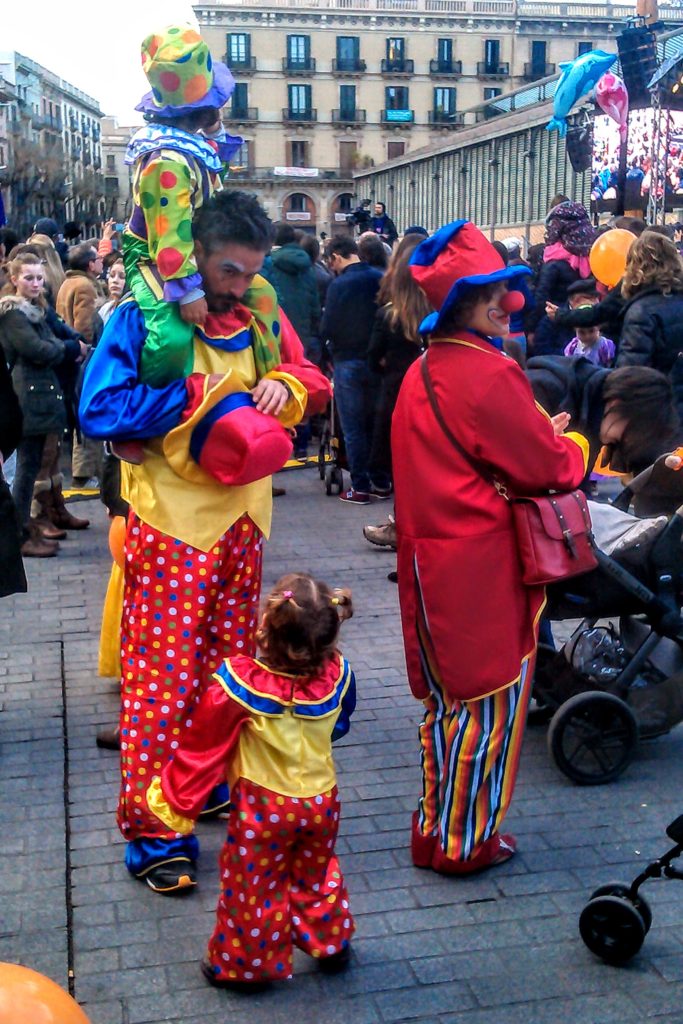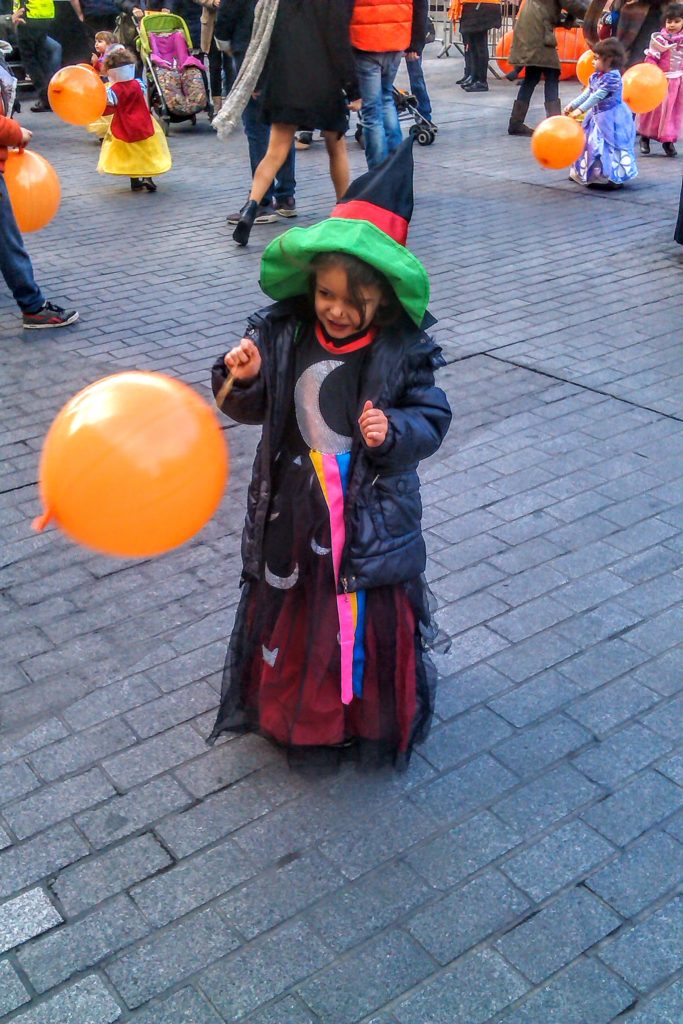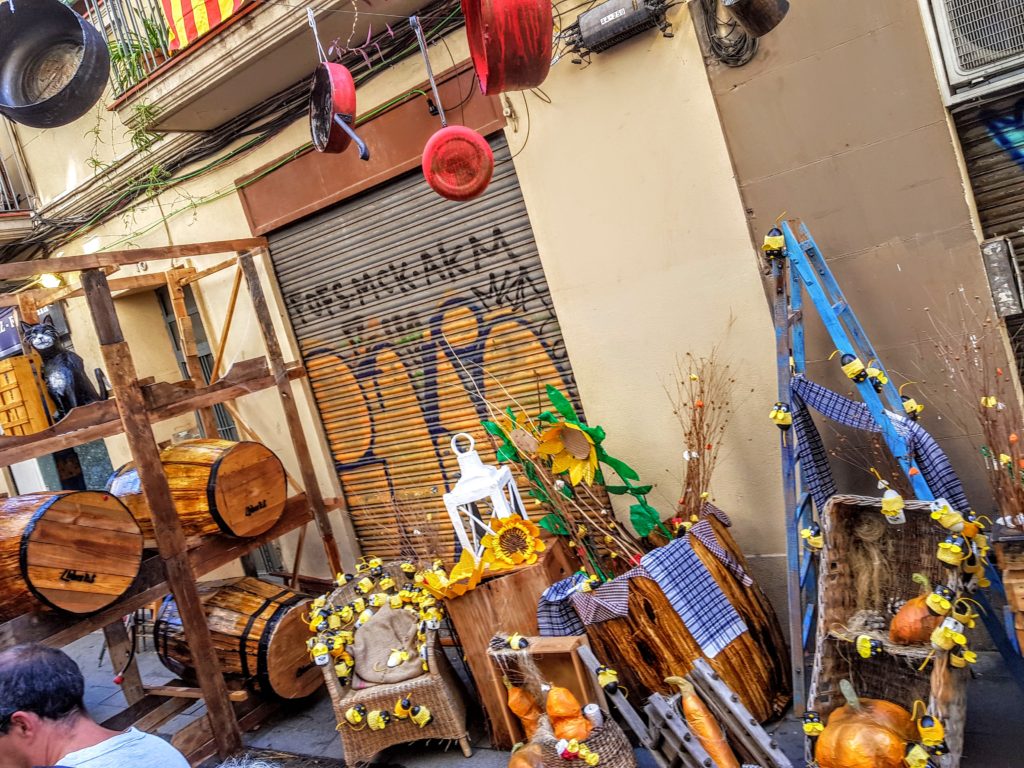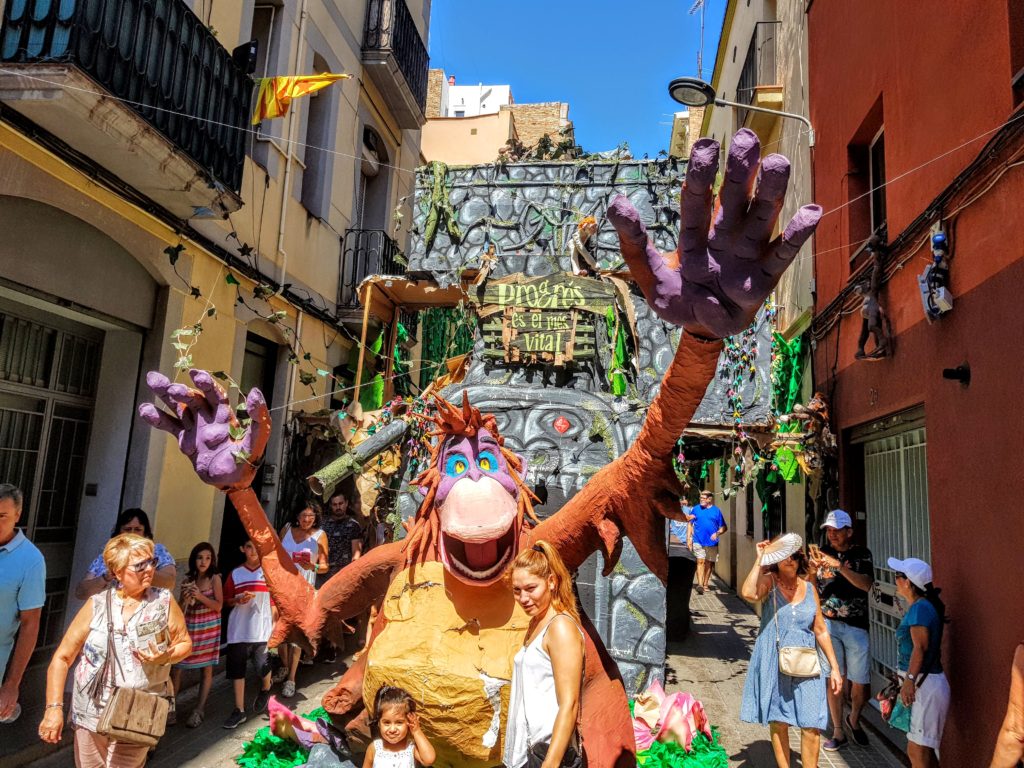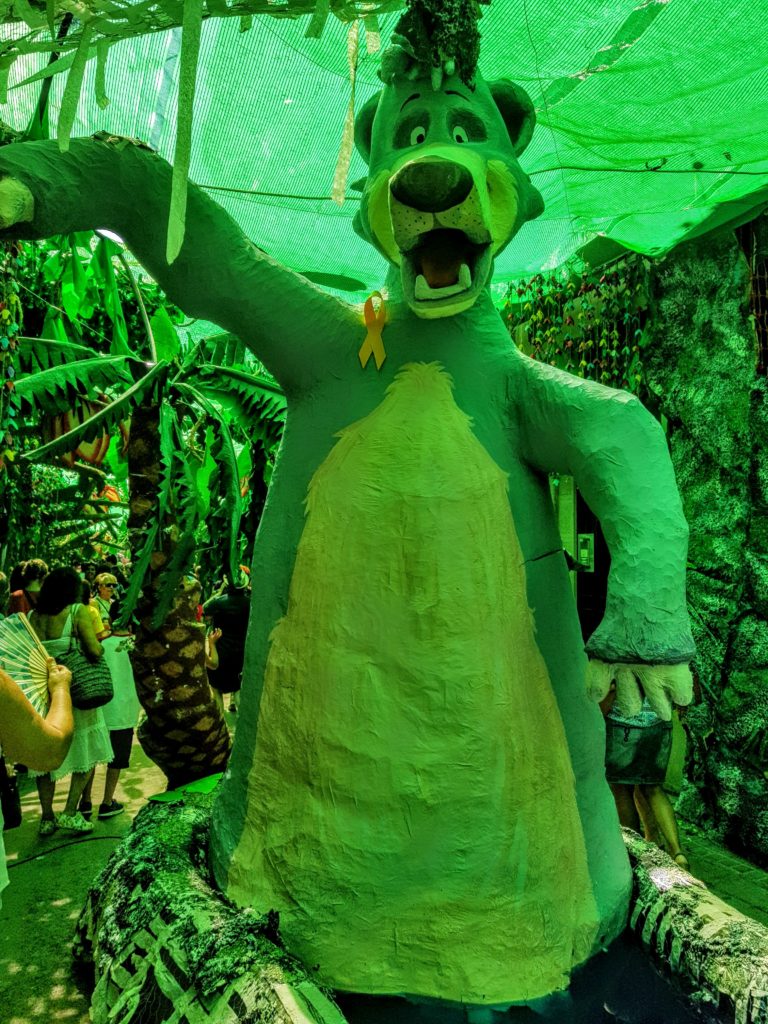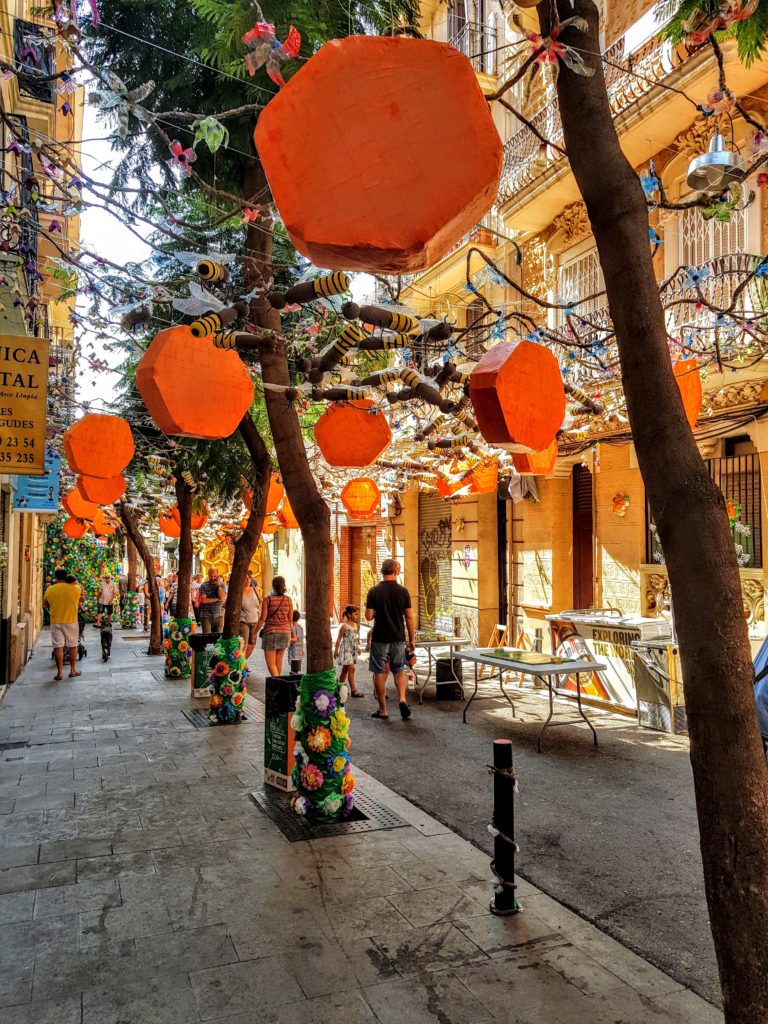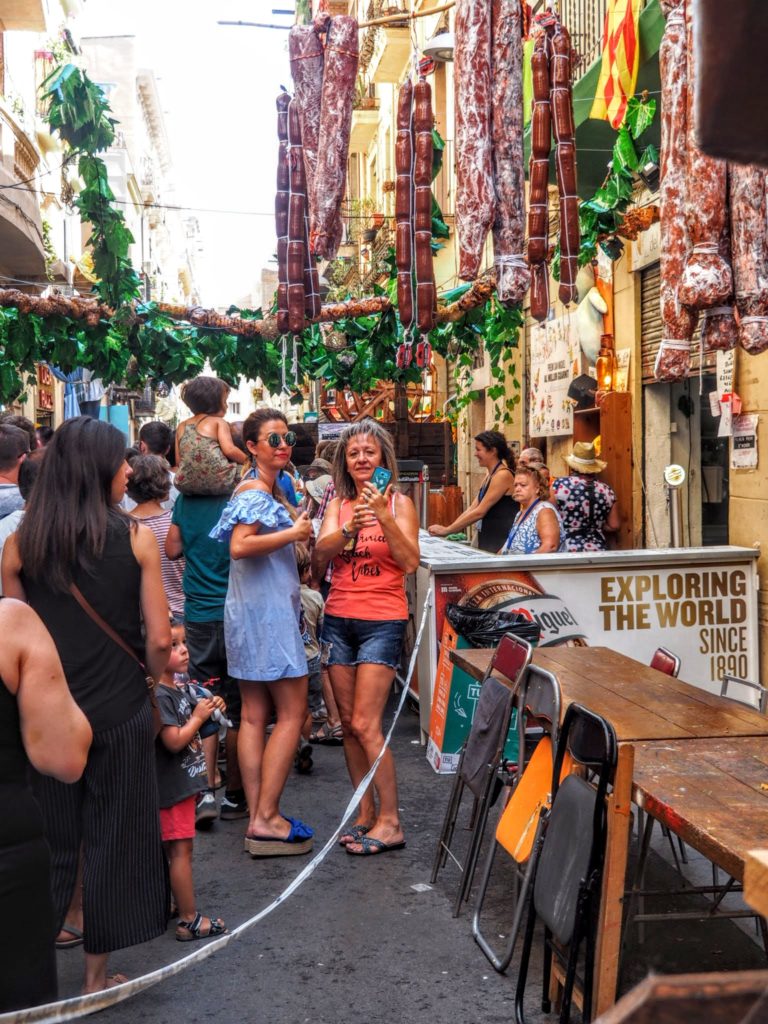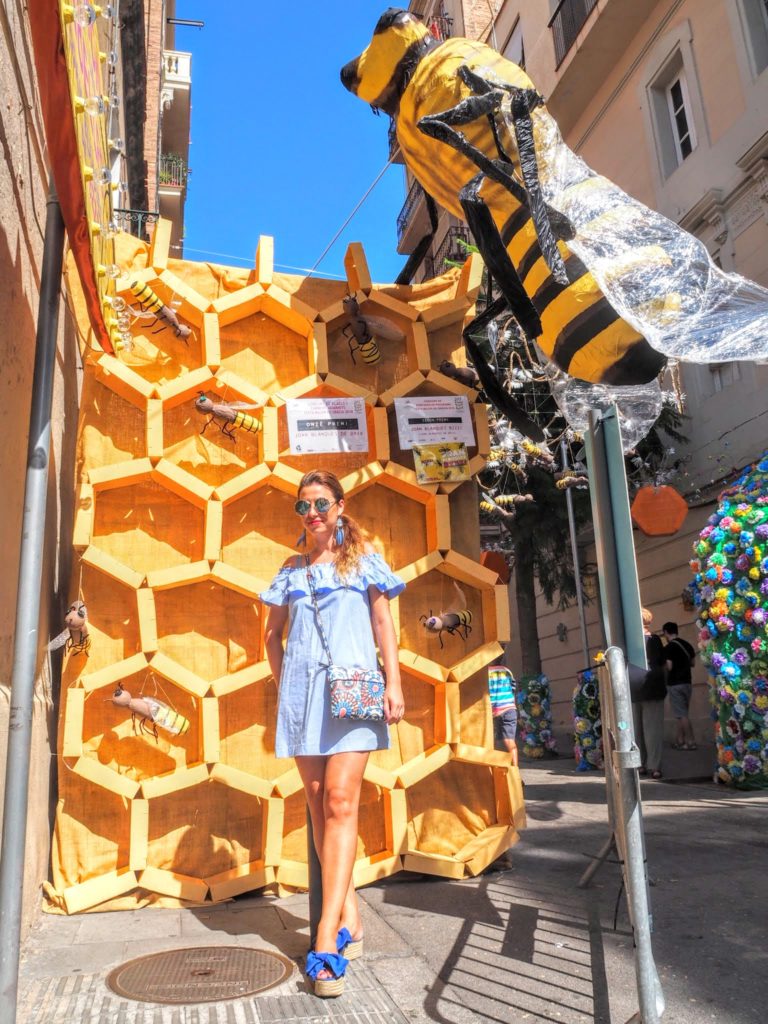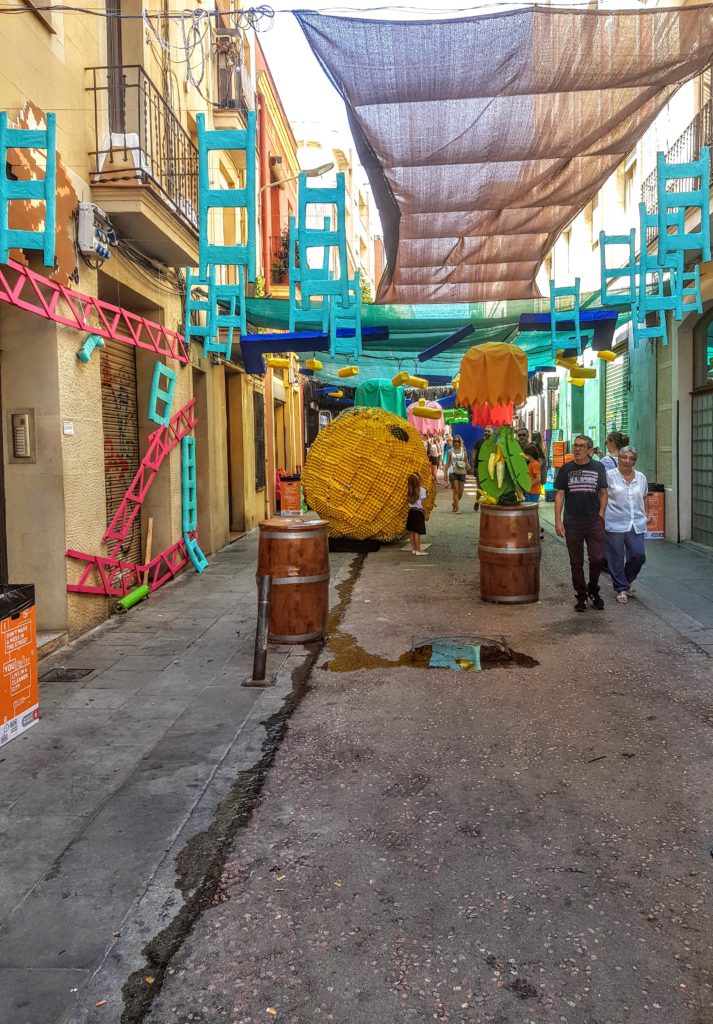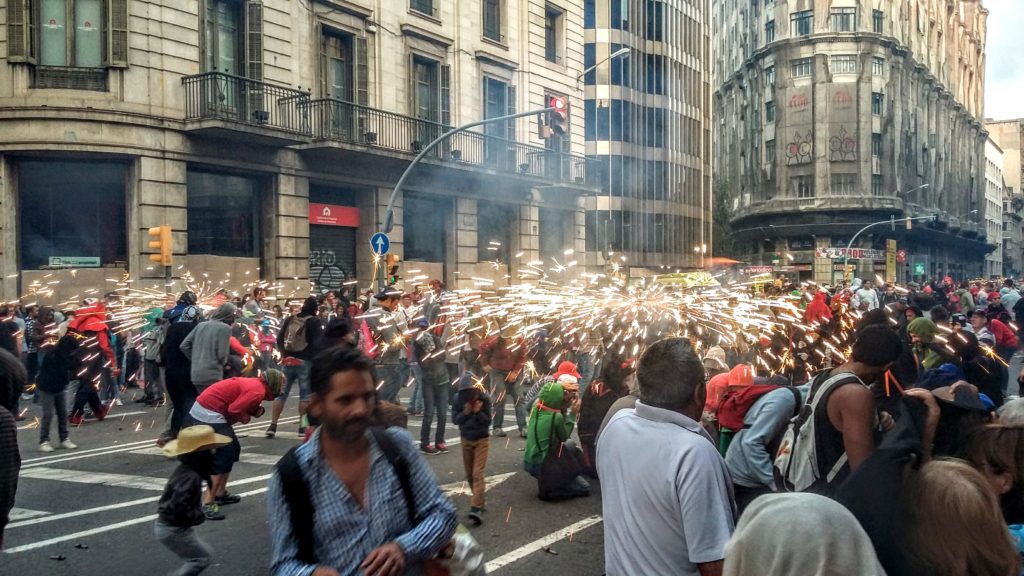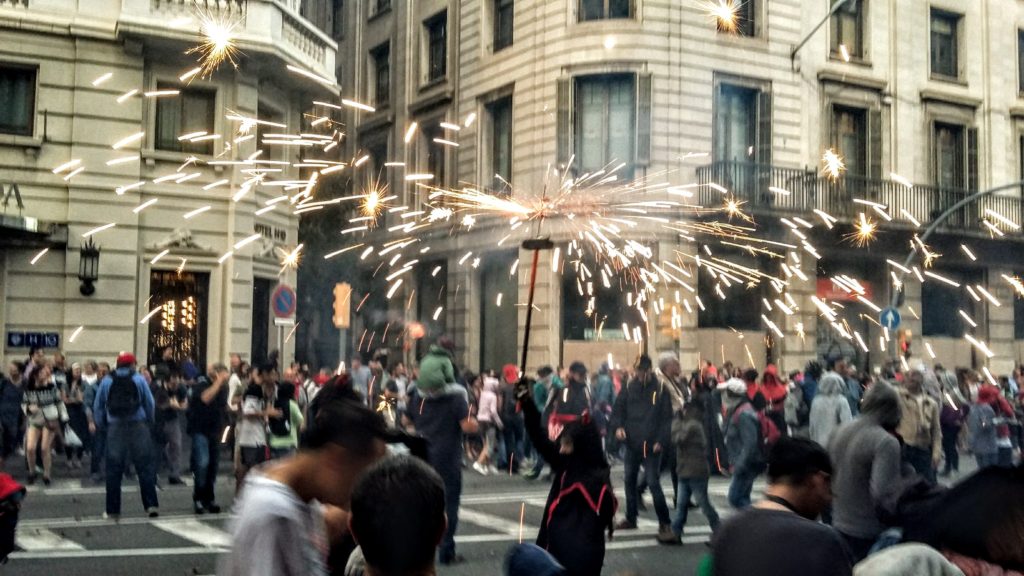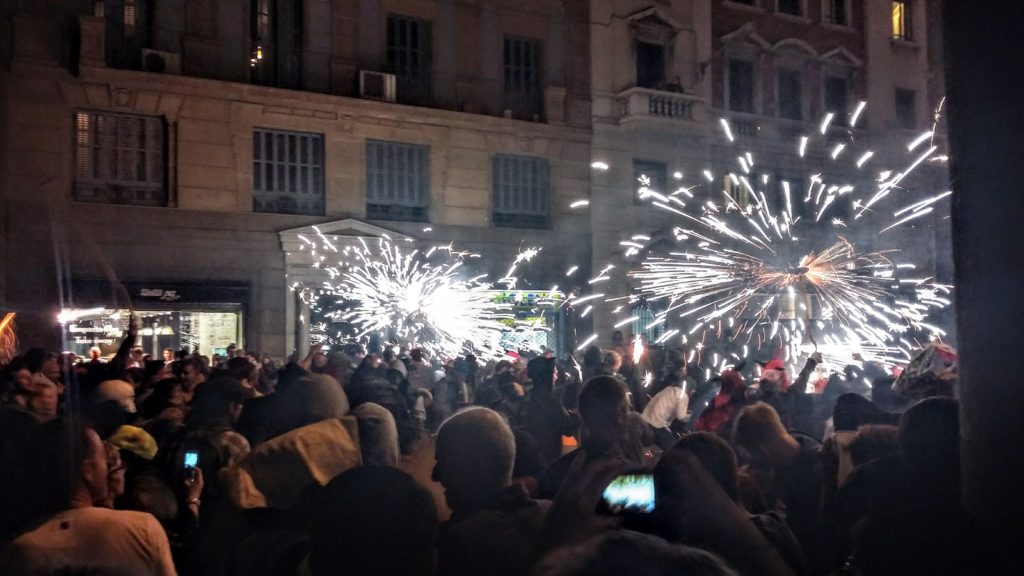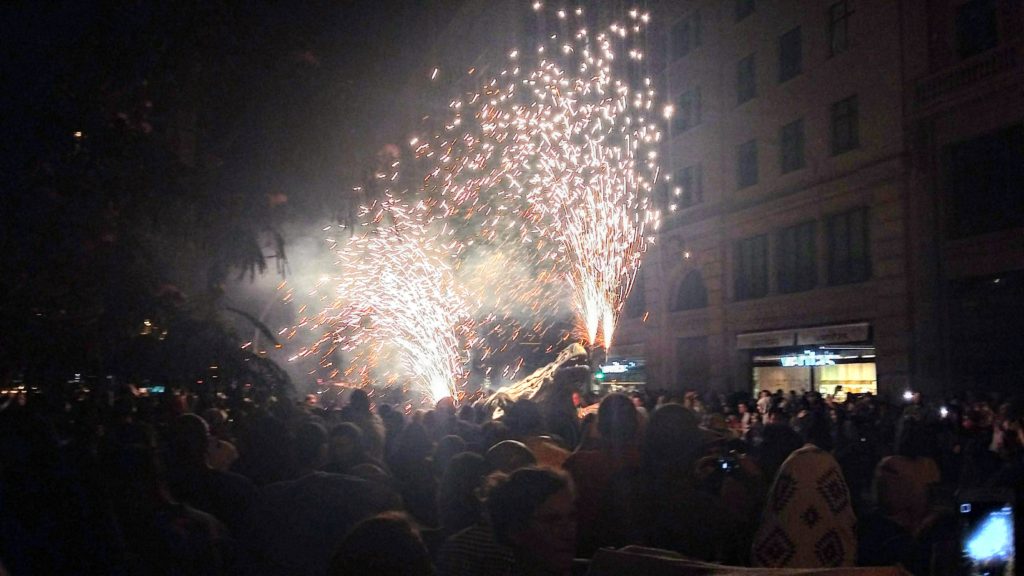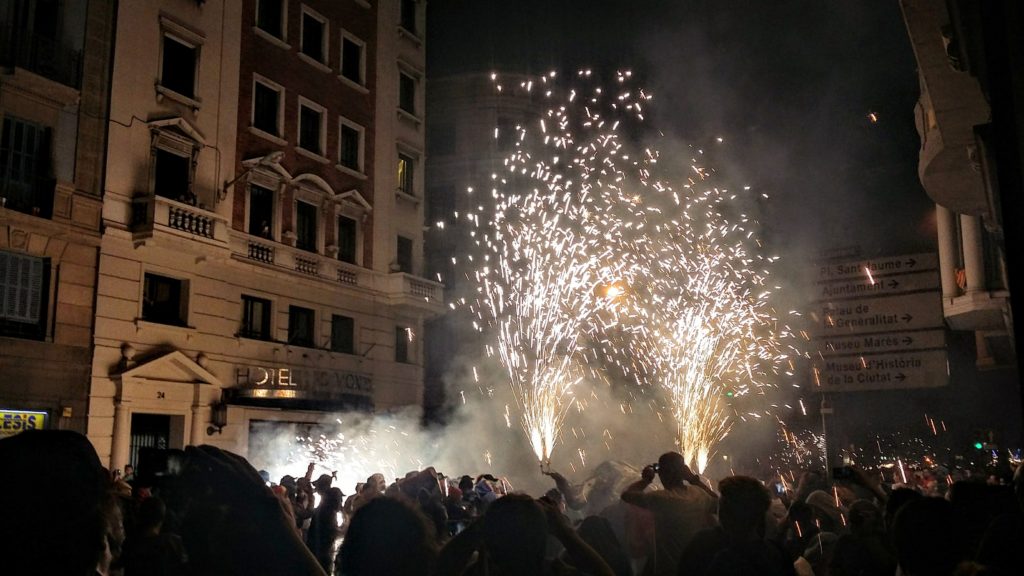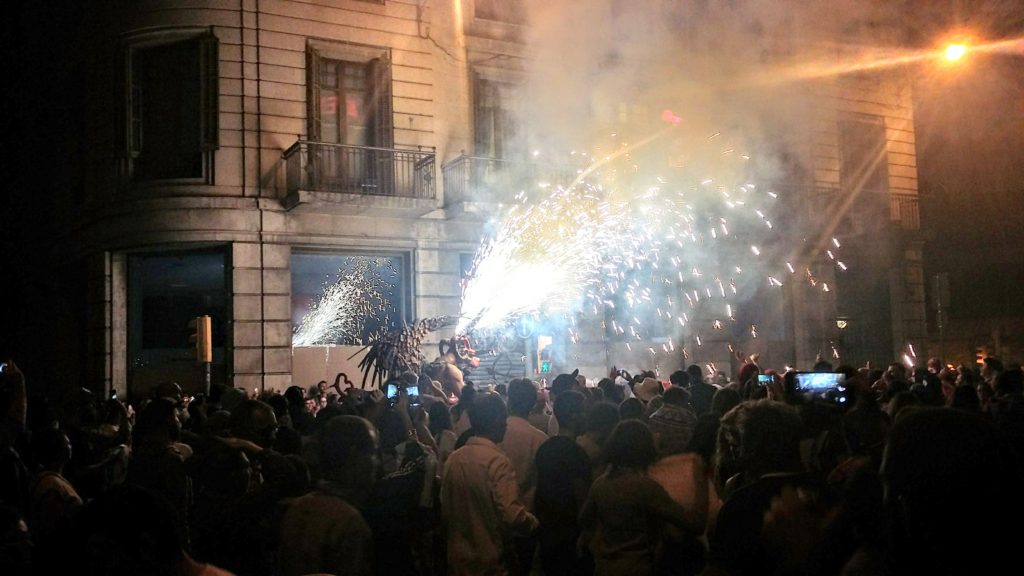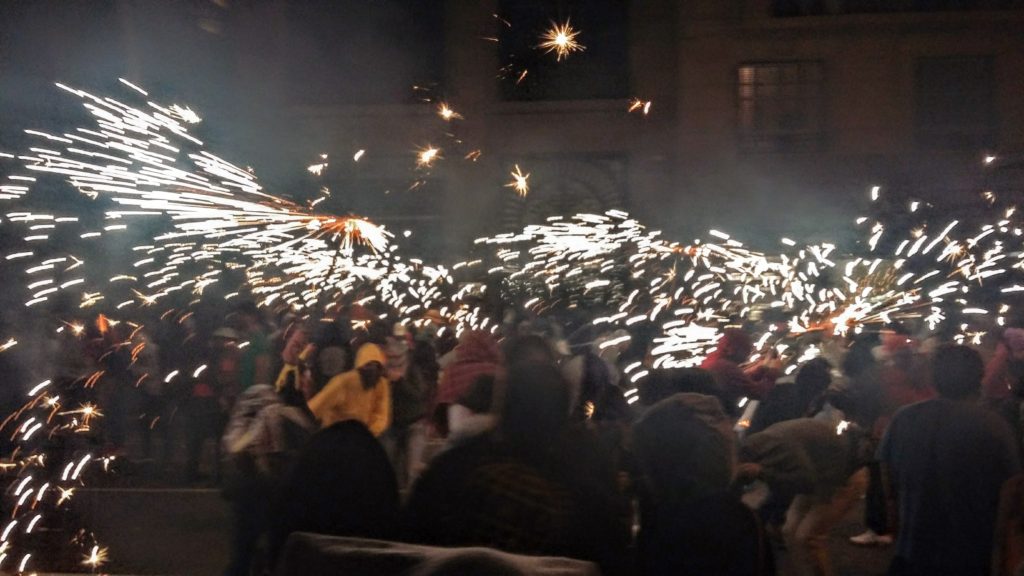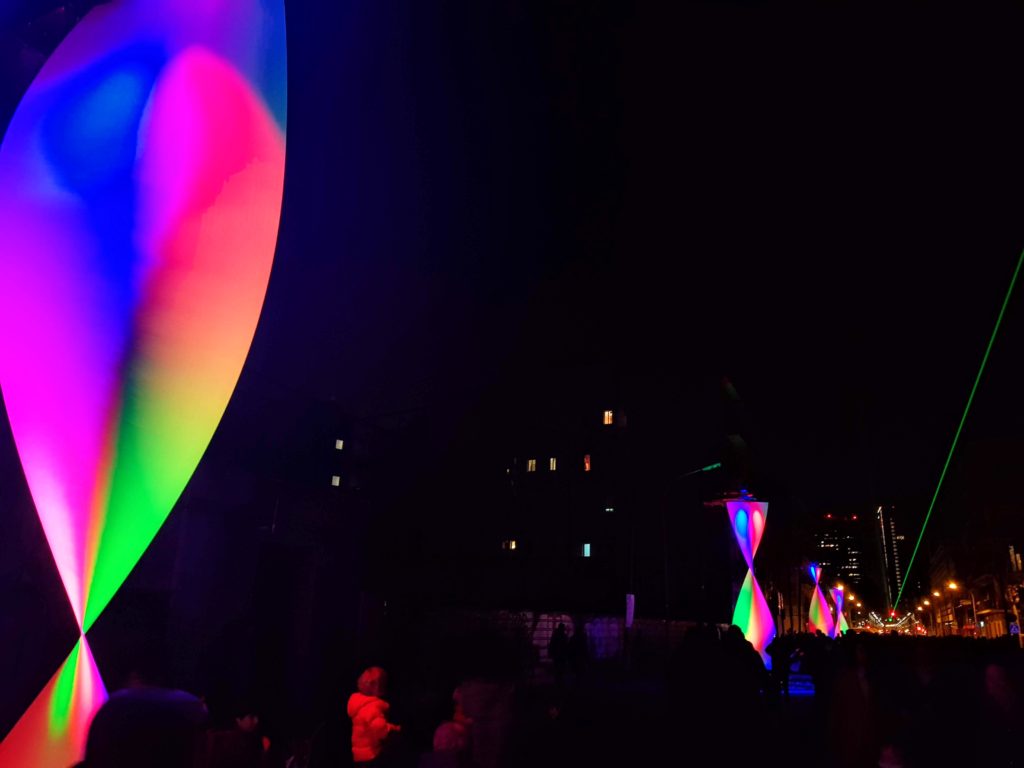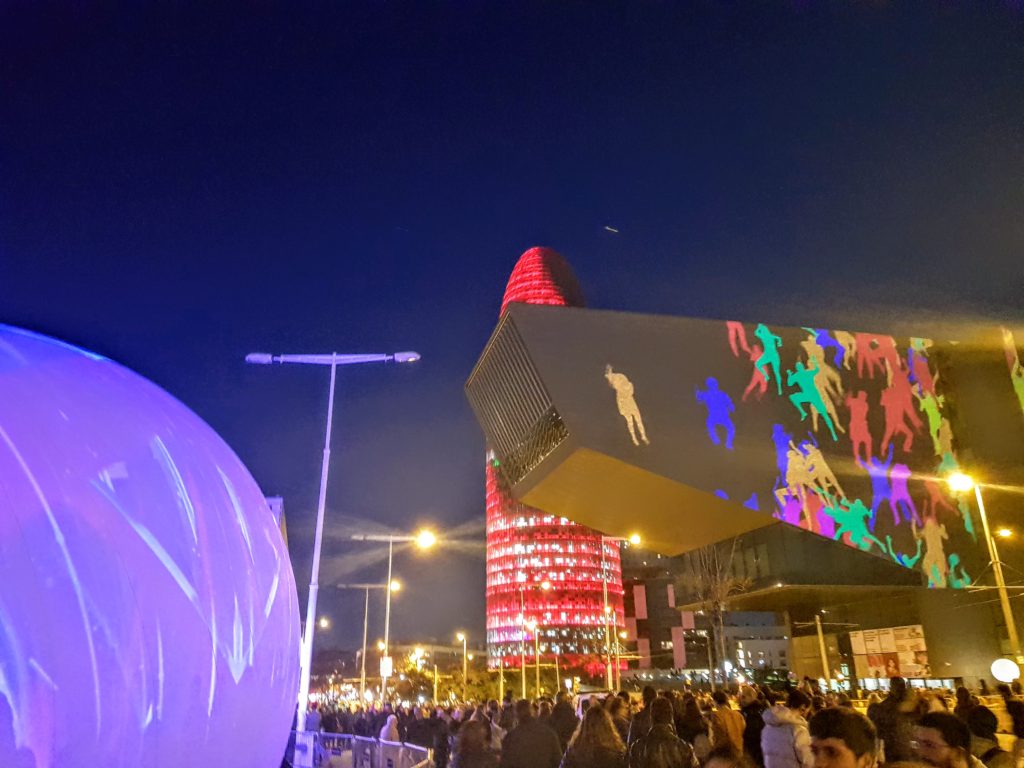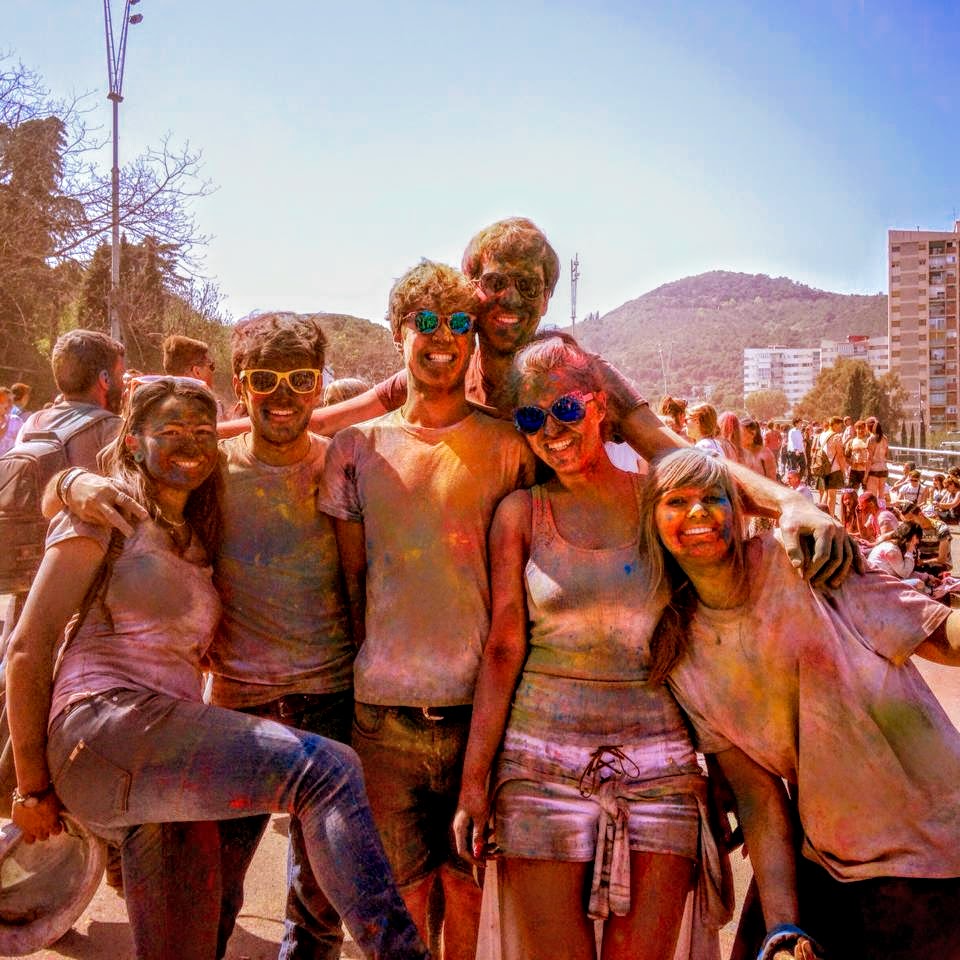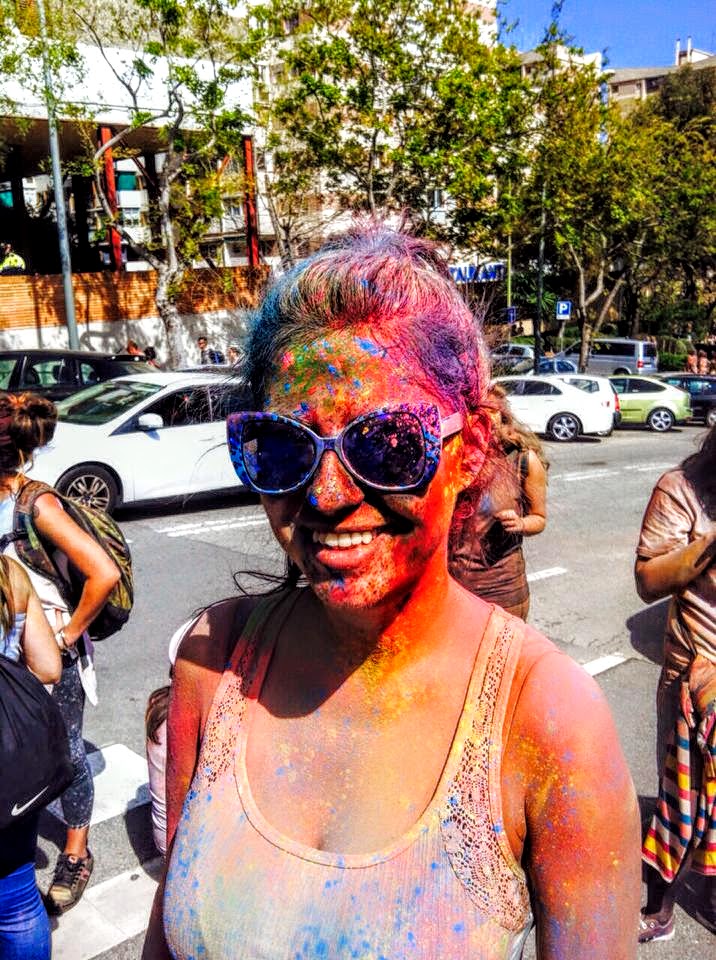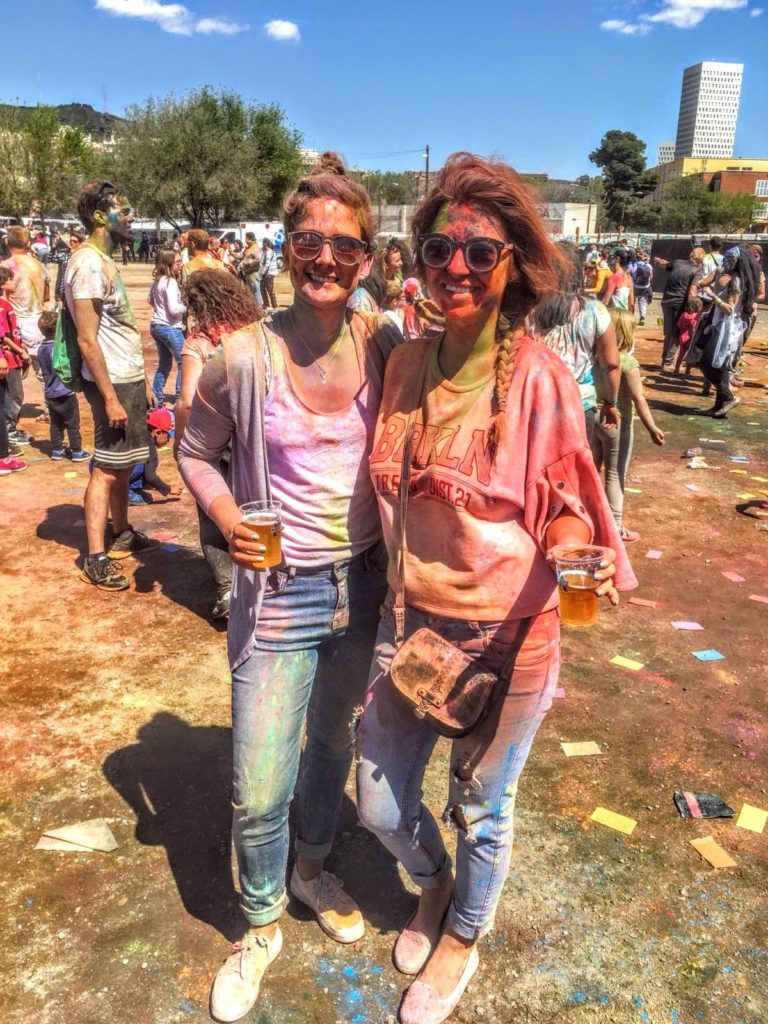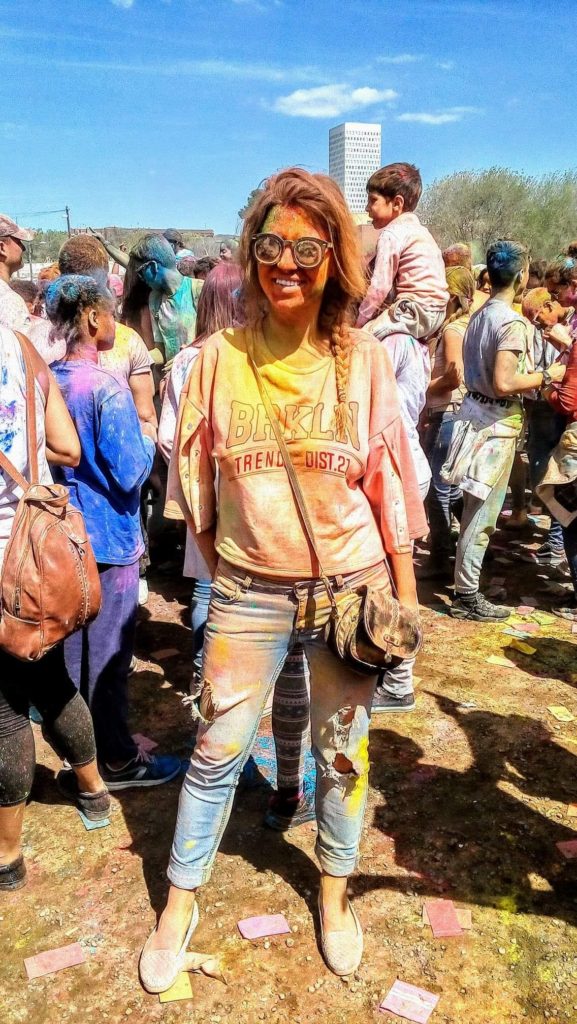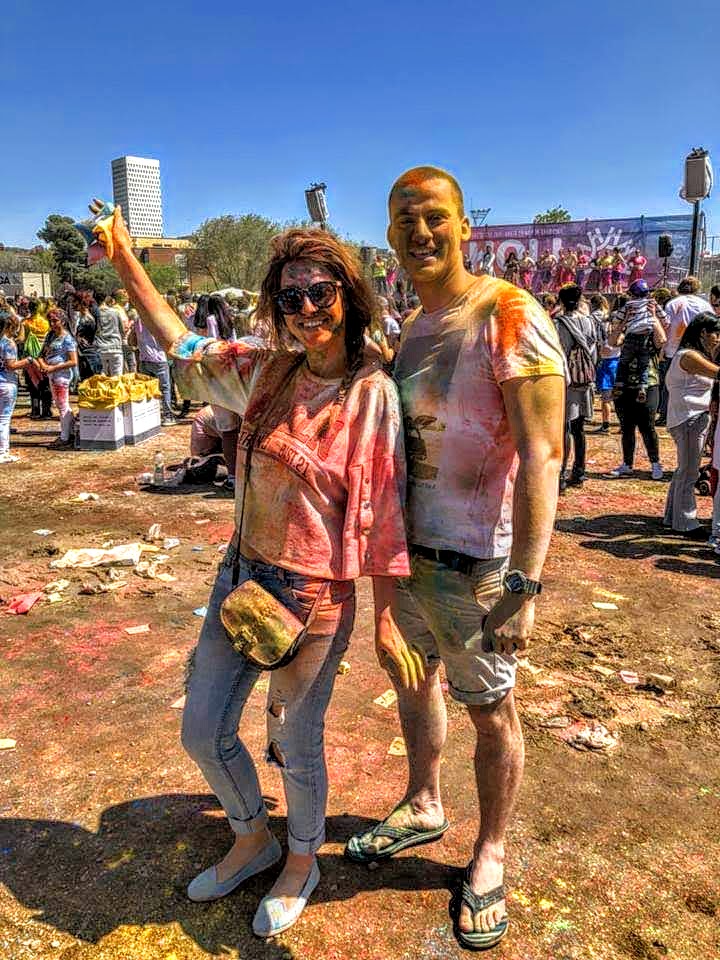Barcelona – the biggest festivals and celebrations
Hey hey! When you think of the best party country in Europe, which one comes to your mind? Yes, exactly, Spain. When people ask me where do I live and I say Spain, they instantly reply – oooh, fiestaaa. Which is not far from the truth. Spaniards do know how to celebrate every occasion and they do have many holidays. With this list I will help you explore the biggest festivals and celebrations in Barcelona.
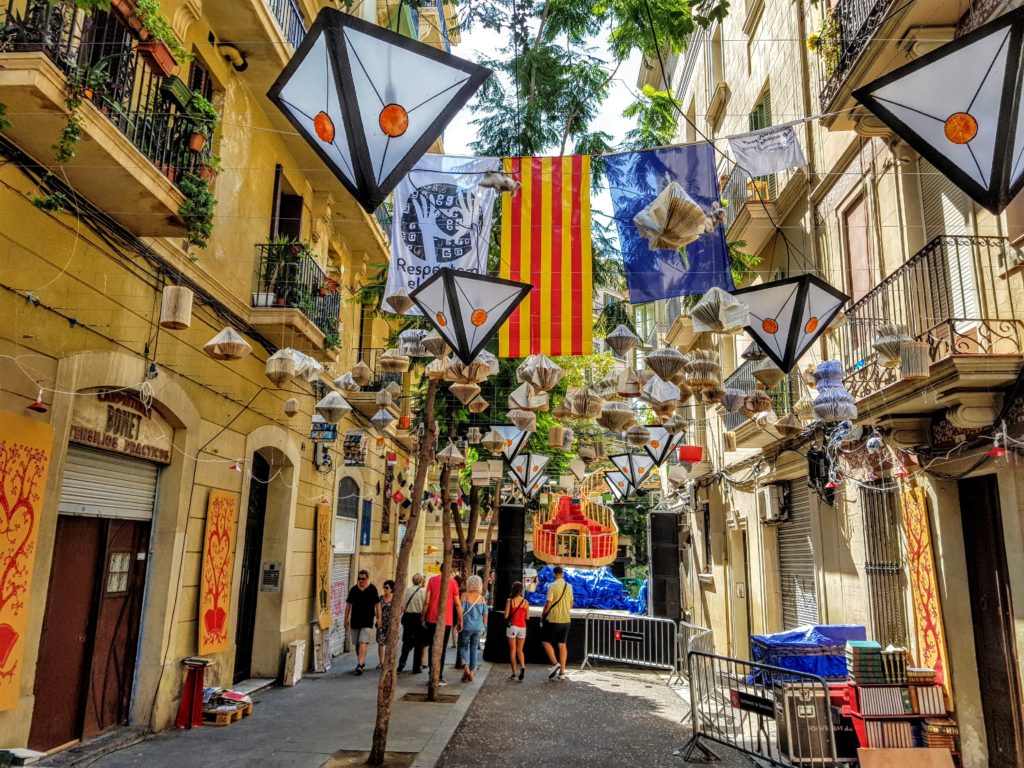
Today I will tell you more about the biggest festivals and celebrations in Barcelona and Catalonia in general. In this post I will not include the music festivals celebrated in the city, because the post will be extremely long. I will focus on the traditional and religious celebrations.
1.El día de los Reyes Magos – The three kings day
This day is also called Epiphany. It is 12th day after Christmas and the end of the Christmas celebrations. So basically this means that Spanish people celebrate from 24th of December until 6th of January. Not joking, many of the activities are being delayed because of these celebrations. On the 5th of January there is a big parade called Cabalgata de Reyes. On the 6th there is the Epiphany day which is the biggest gifts exchange day in Spain. Yes, kids here receive their Christmas gifts on the 6th. But before explaining what the Cabalgata is, let me tell you a bit of a history behind this holiday.
Christian people believe that the three kings of the orient – Baltasar, Melchor and Gaspar (those are the names in Catalan) visited baby Jesus on the 12th day after he was born. Epiphany or manifestation is the manifestation of Christ to humans. Spanish kids write their letters to the kings rather than Santa Claus. Kids can send their wishes via post or they can also deliver them to one of the eight Kings’ pages or messangers in the parade. During Christmas time you can also find Kings pages all around the city.
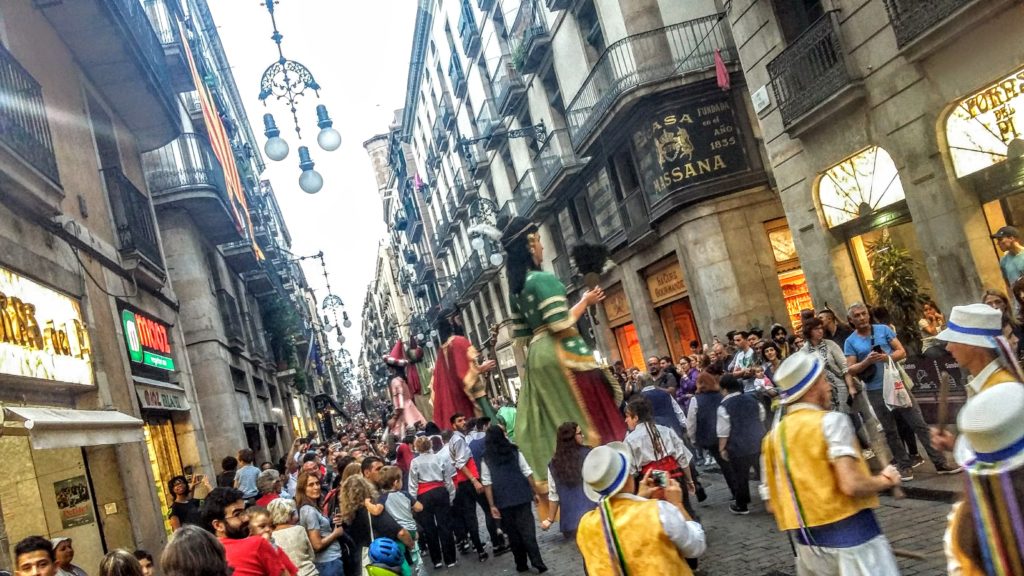
6th of January is an official holiday and kids are opening their presents during the whole day.
On this day families celebrate together eating typical sweet bread called Tortell de Reis in Catalonian or Rascón de Reyes in Castilian (which means King´s ring). Inside the cake there is a tiny toy and a fava bean. The one who is lucky enough to find the toy is the King or Queen of the feast and the one who finds the bean has to buy the Roscón the following year.
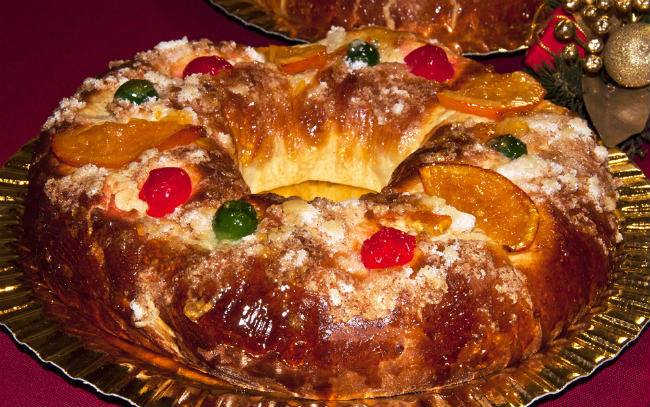
About the Cabalgata…It is a big parade that takes place on the eve before 6th, which means on the 5th in the evening. There are many local parades in Barcelona, but the biggest one is around 5 km long and crosses the center of Barcelona. It continues for 3 hours and there are around 12 floats, called carrozas that are participating in the parade. The show is truly spectacular, it includes dances, music, circus, theater, etc. performed by professionals and volunteers. Each float has a theme and every year it changes. There are more than 1300 participants in the parade! They are throwing out gluten free caramels!
You have to see how Catalan grandmas are fighting for the caramels! 😂
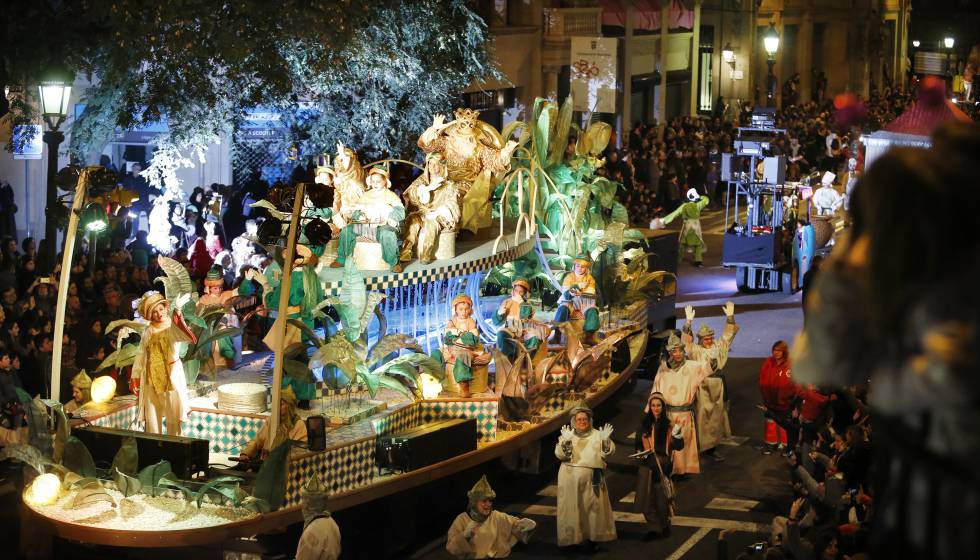
People start queuing very early in the afternoon to make sure they will have the best spot to observe the show. You can often see people with ladders on the street. Yes, you need one of these if you want to see something, there are more than 500 000 people on the streets watching the parade every year!
2.El carnaval de Barcelona
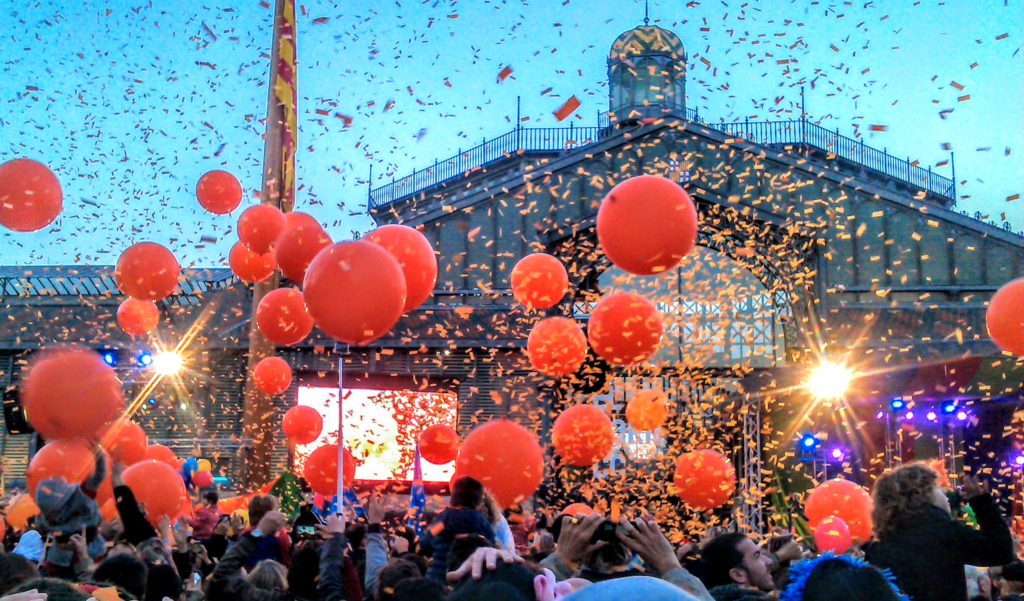
The carnivals are typical for most of the Catholic countries and Spain is not different. The carnival of Barcelona takes place in February and it is the last chance to go wild before the abstinence period before Easter. The biggest actions happen in avinguda Paral-lel and it is called la Gran Rua del Carneval. You can see a lot of floats, dances, fancy costumes, music, fireworks and many more. But the most famous carnival is the one in Sitges- small coastal town close to Barcelona, which is also popular gay destination. The carnival there gets really wild, just dress up and go!
3.Diada de Sant Jordi
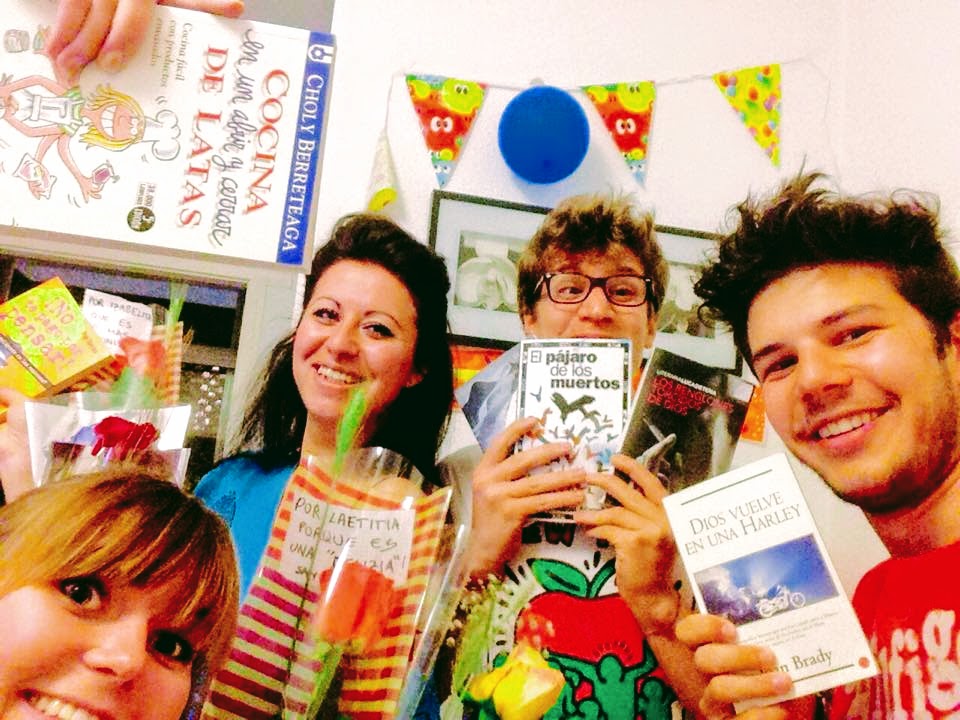
Saint George’s day is celebrated on the 23rd of April and it is also called Día de la Rosa (the day of the Rose) also known as the Catalonian Valentine’s day. As per tradition the couples exchange gifts – the boy gives a red rose to the girl and the girl gives him a book. Roses and books for sale cover the whole city! It is not obligatory to give something only to your lover, you could by book or rose for family, friends or even colleagues. Sant Jordi is the patron of Catalonia since 15th century.
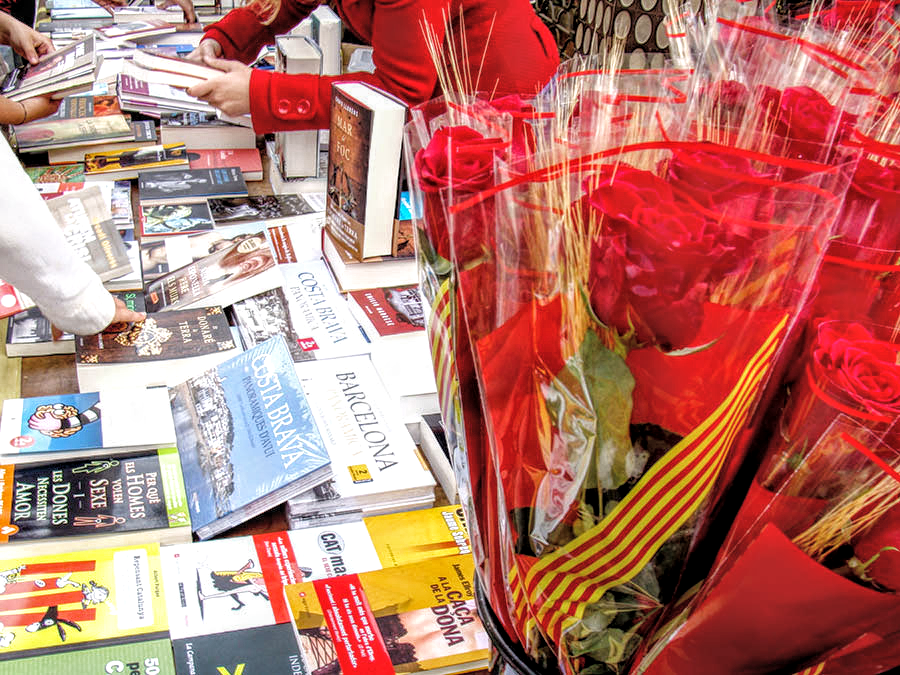
The legend behind his name is the same one as Saint George’s one – he kills the dragon that terrorizes the city and saves the princess. You can buy gifts in every single corner of the town but the busiest area is La Rambla street. One of the jewels of Barcelona – casa Batlló is also beautifully decorated with roses. On this day Barcelona is even prettier!
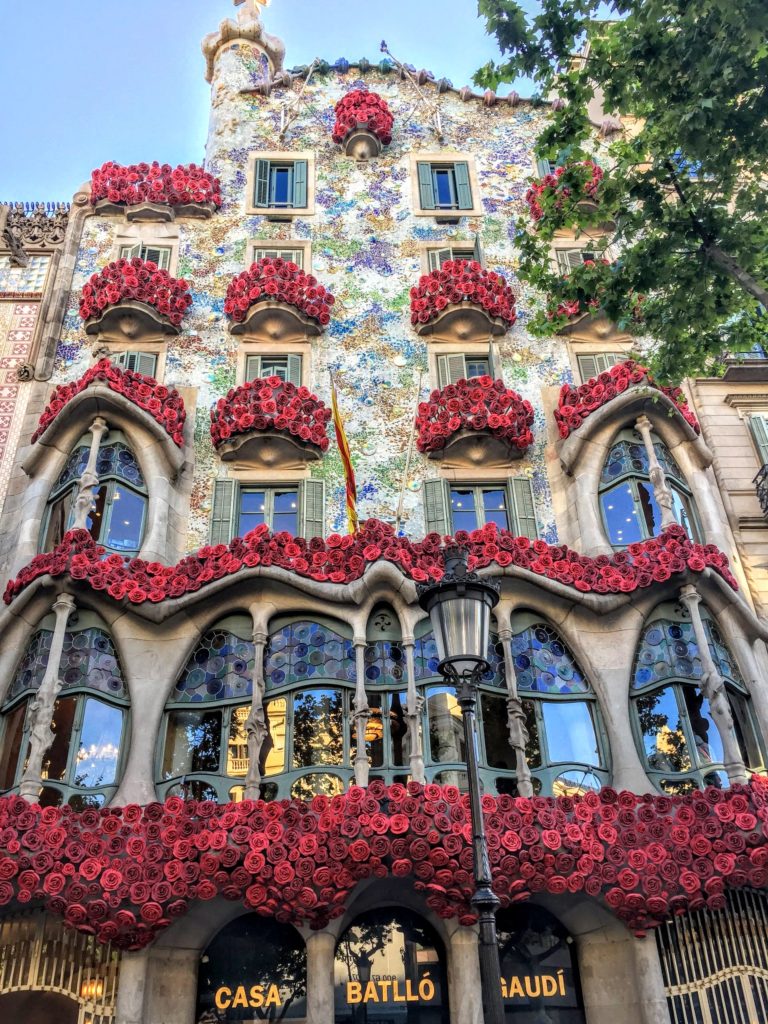
4. Día de Sant Joan
Sant Joan is celebrated on the night of 23rd of June/24th and it is maybe the biggest party night in Barcelona. It is also known as ‘Nit del Foc” (night of fire) among Catalans. The actual feast day celebration is on the 24th and it is a public holiday. But the biggest action is on the night before. There are fireworks everywhere during the whole night. Even though the party is everywhere around the city the whole population goes to the beach. The best idea is to go early in the evening in order to find a sport and to leave not super late, because it gets extremely crazy and sometimes even dangerous. Of course it depends on how drunk you are at this moment. 😀 The party continues till the morning as you could guess.
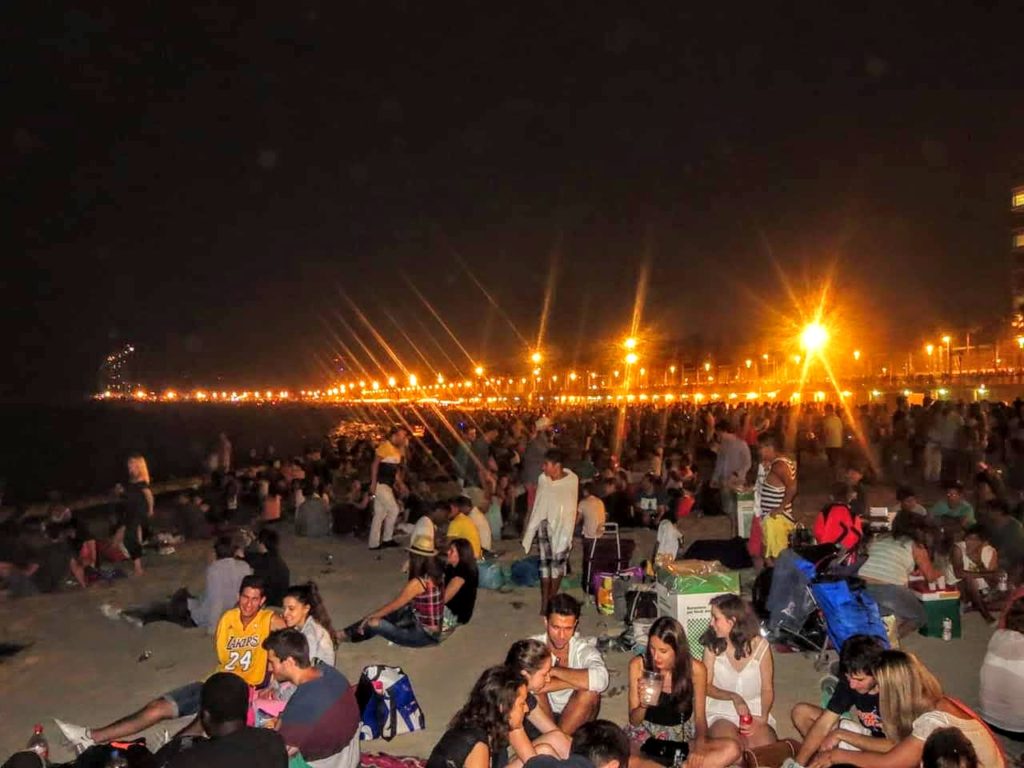
The day celebrates the largest day and the shortest night of the year.
The sun is a symbol of fertility and wealth and so it must be given strength by bonfires and fireworks. There is a saying that there are three symbols of Sant Joan – fire, water and herbs. Fire symbolizes purity, this is why people make fires even at the beach. The water symbolizes healing, this is why some people go to the sea at night. The herbs symbolize remedy and common belief os that their healing qualities are many times stronger during the night of Sant Joan. Maybe this is why people smoke so much weed! No, I am kidding, they smoke it every day, not only on this day.. 😀
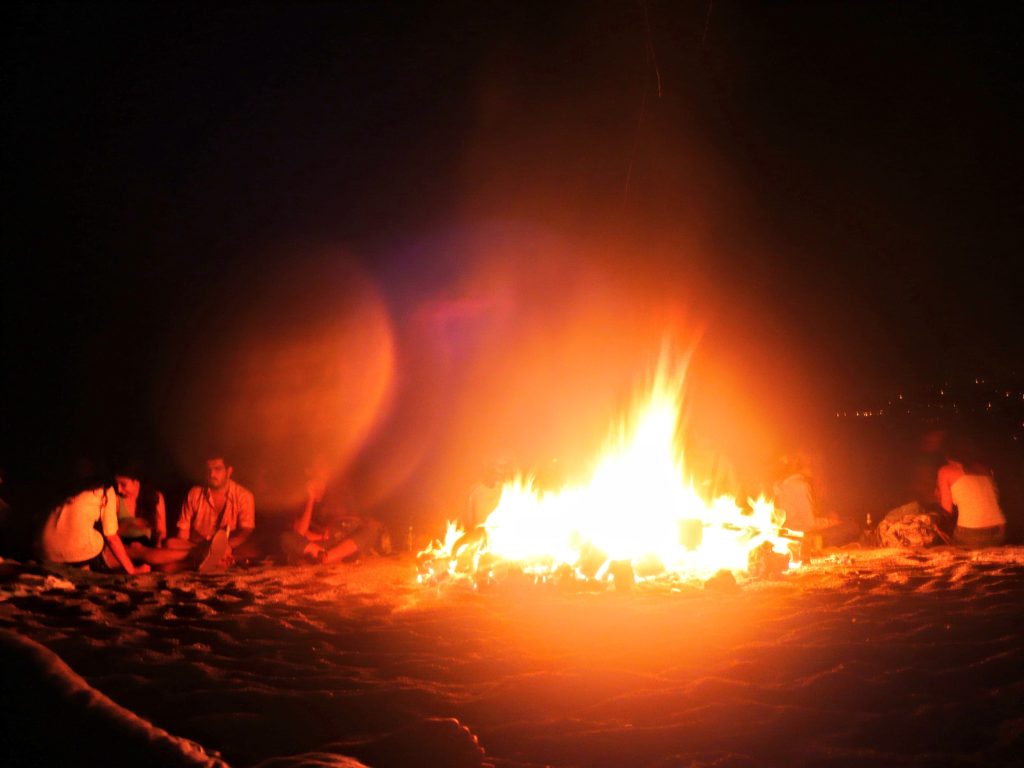
It is an amazing experience to celebrate Sant Joan’s day but you should be really careful. There are firecrackers and fireworks everywhere and you can easily get hurt or set on fire, especially girls’ hair!
5. Festes de Gracia
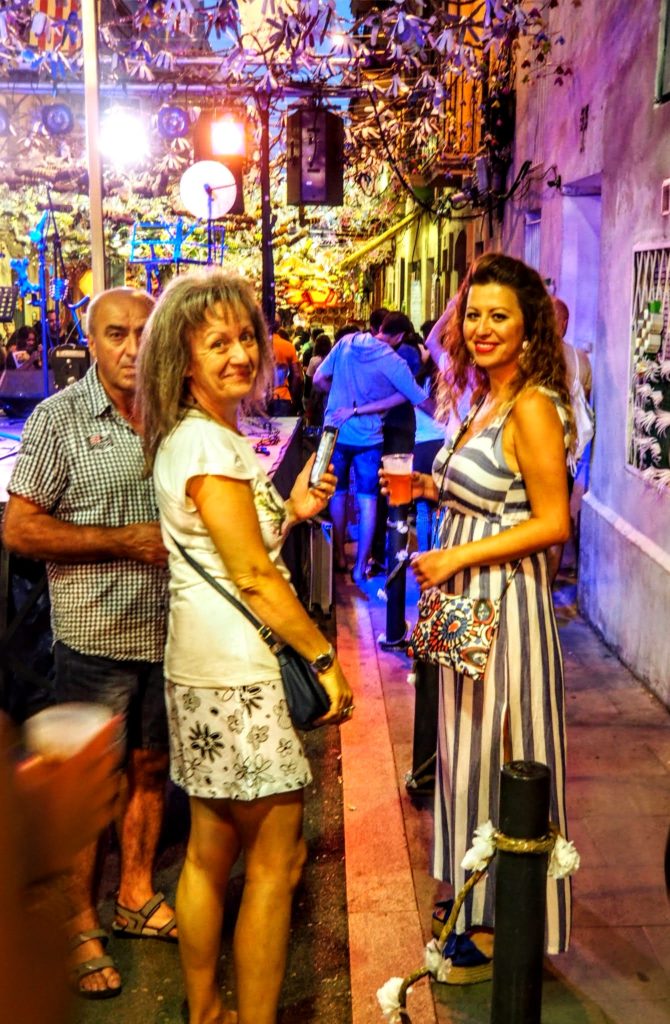
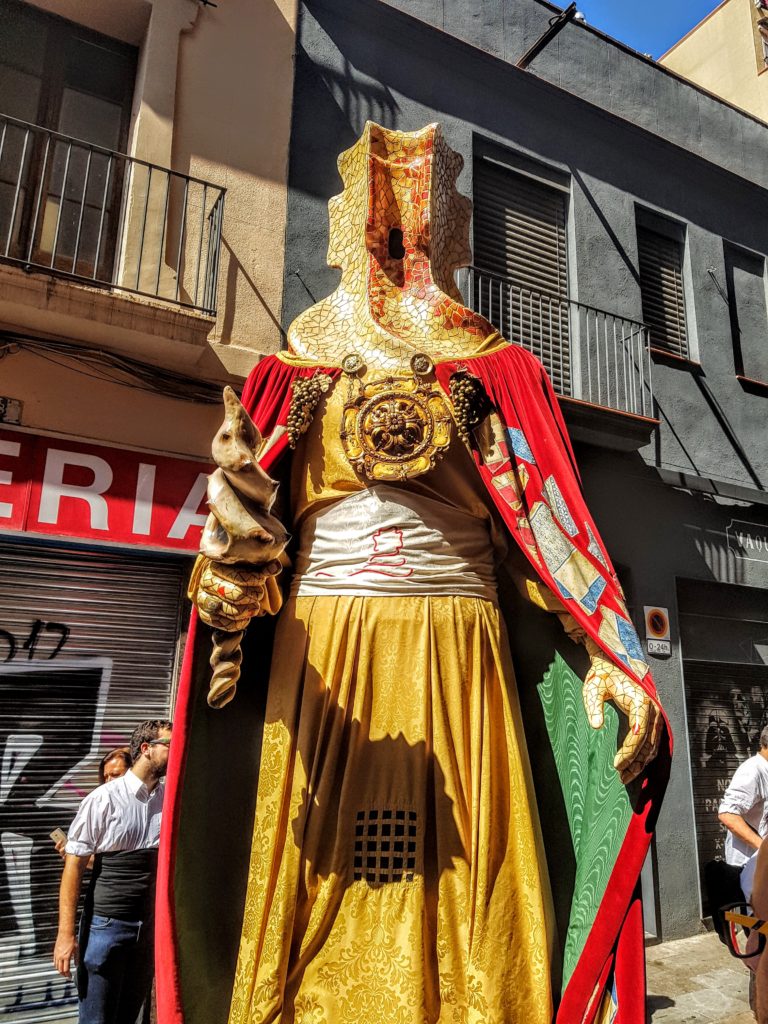
This is definitely my favorite festival in Barcelona. It happens in mid August and it lasts for a week. Every neighborhood of Barcelona has similar celebration but this is the biggest and the most unique one. Gracia is a barrio (neighborhood) in the upper part of Barcelona famous by its bohemian atmosphere, vibrant nightlife and tiny narrow streets with many cute bars and coffee places.
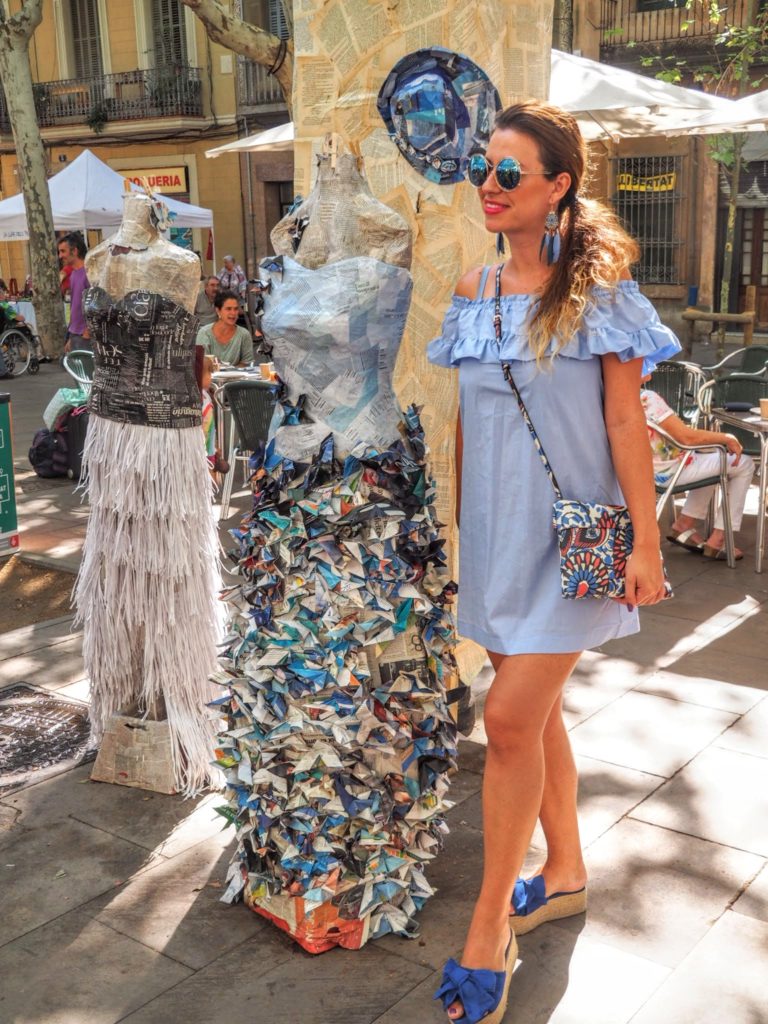
The concept behind this festival is that many streets in the barrio compete to win the prize of the best decorated street.
As you can imagine the war is real! Every other street is better than the previous one! The people living on the street are the ones making the decoration. Every street has different theme and the standards are really high! They also sell drinks and food in order to raise money for the next year’s decoration. And all the work they do is voluntary. The party never stops. During the day there are many visitors strolling around the barrio, enjoying the creativeness of the stunning decoration and during the night there are live concerts and outside bars. The best thing is that is completely open for public and you don’t need to buy tickets! It is unbelievable, trust me!
6. Festes de la Mercé
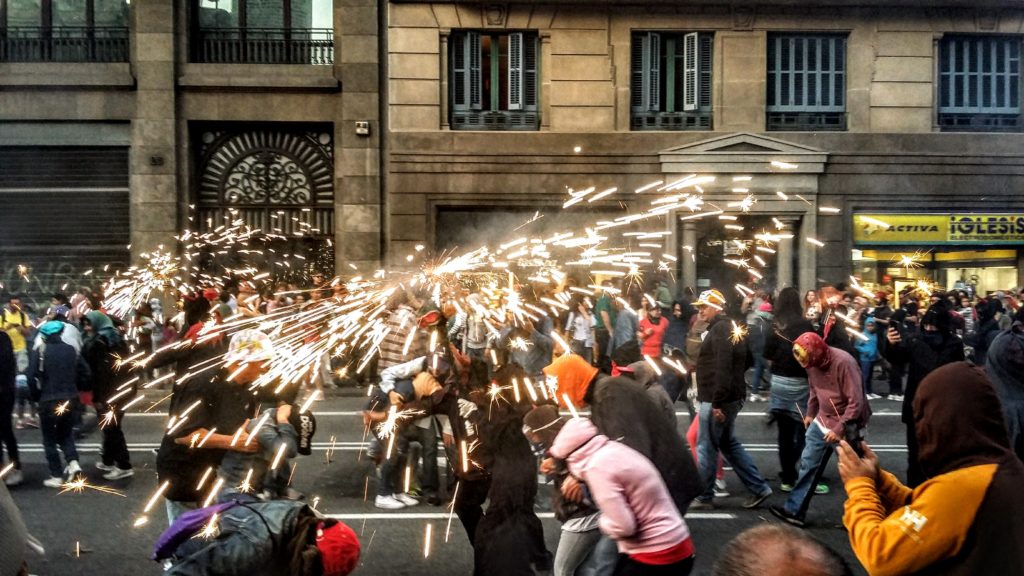
This is the annual festival of Barcelona. The actual day of la Mercé is 24th of September, but the celebrations start few days before. There are some important things happening during this festival. The dance of the Giants – those are gigantic figures held by local dancers who make them dance on a specific music.
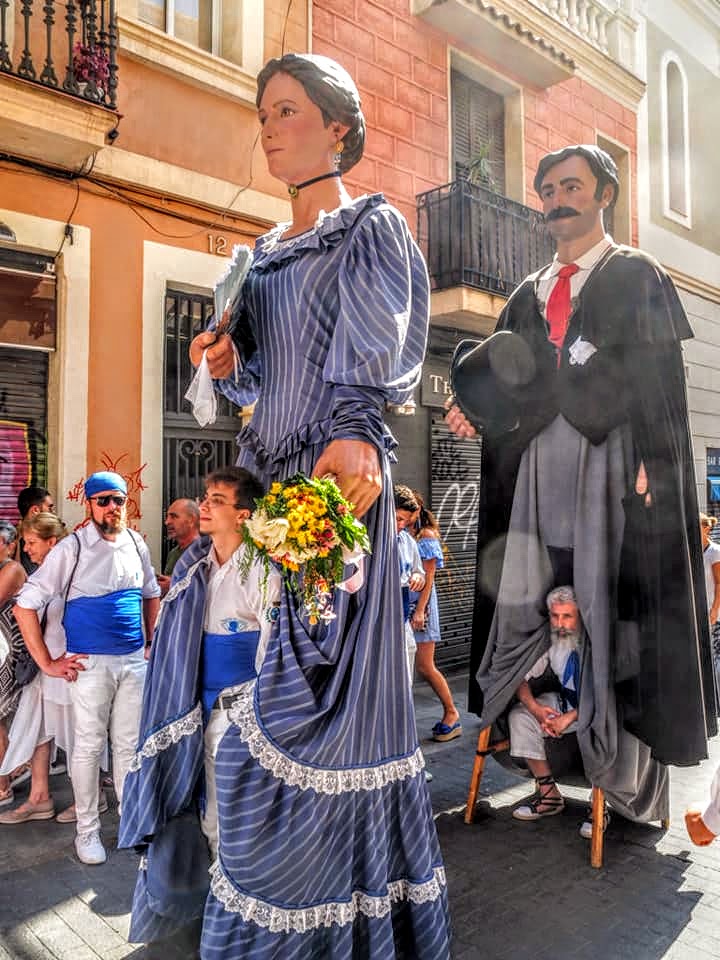
Other pretty amazing traditions are the Correfoc, a pyro-musical and a display featuring synchronized fireworks.
As you can see, fire and fireworks are important part of Catalan traditions. More than 600 events are happening all around the city. Each day there is a street parade filled with mythical characters and traditional drumming. Dance, circus, theatre, any type of show that you can imagine – they do it! The best thing again is that everything is free, you can visit every activity without paying a single euro.
Maybe the most impressive parade is the via Laietana’s one. You can see fire cracking gigantic dragons! The correfoc is something that I have never seen before and to be honest it is quite scary if you are close to the guys who are doing it. It literally means fire-runs. A group of individuals will dress as devils and light fireworks – fixed on devil’s pitchforks or strung above the route. Dancing to the sound of a rhythmic drum group, they set off their fireworks among crowds of spectators. The spectators that participate dress to protect themselves against small burns and attempt to get as close as possible to the devils, running with the fire. Other spectators will watch from “safe” distances, rapidly retreating as necessary.
Another cool Catalan tradition that could be seen during las Festes de la Mercé is Castellers. Those are human towers. Castells (castle in Catalan) are a phenomenon particular to Catalonia and consists of erecting human towers. It is truly amazing to see how people are climbing on on the top of the other constructing the tower. The ones on the top are usually really small kids. There are several schools for castells in each barrio of Barcelona.
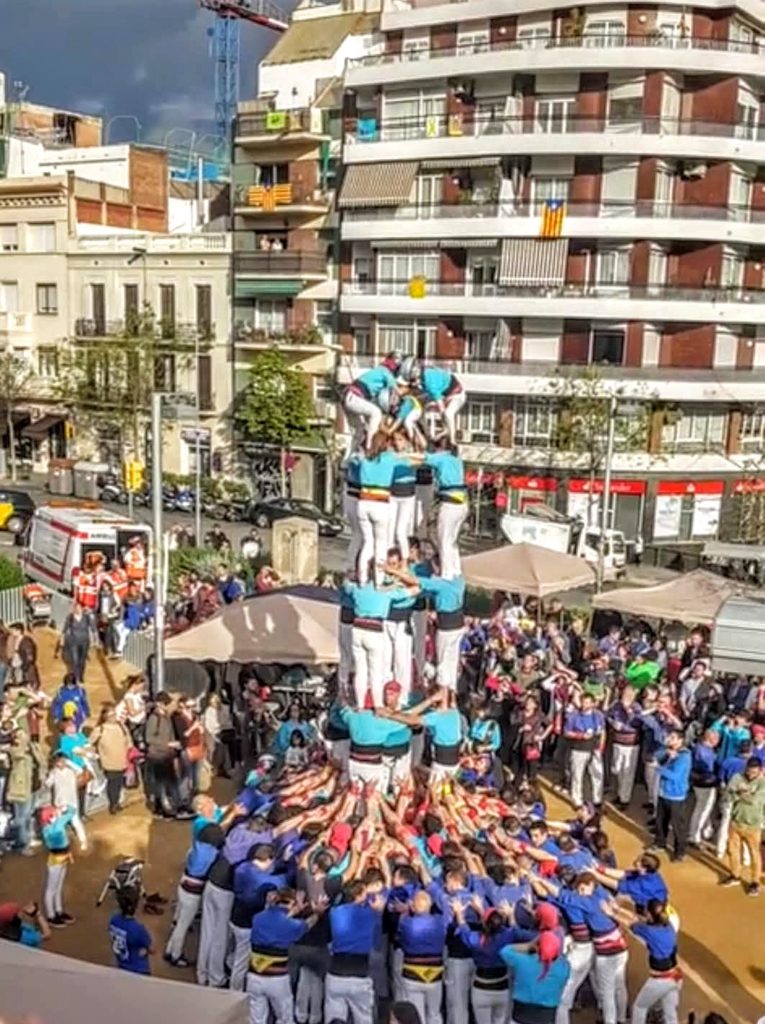
And a couple more that I like, one is done only in Barcelona, but not so famous and the other one is an Indian tradition celebrated all around the world:
7. Llum Barcelona
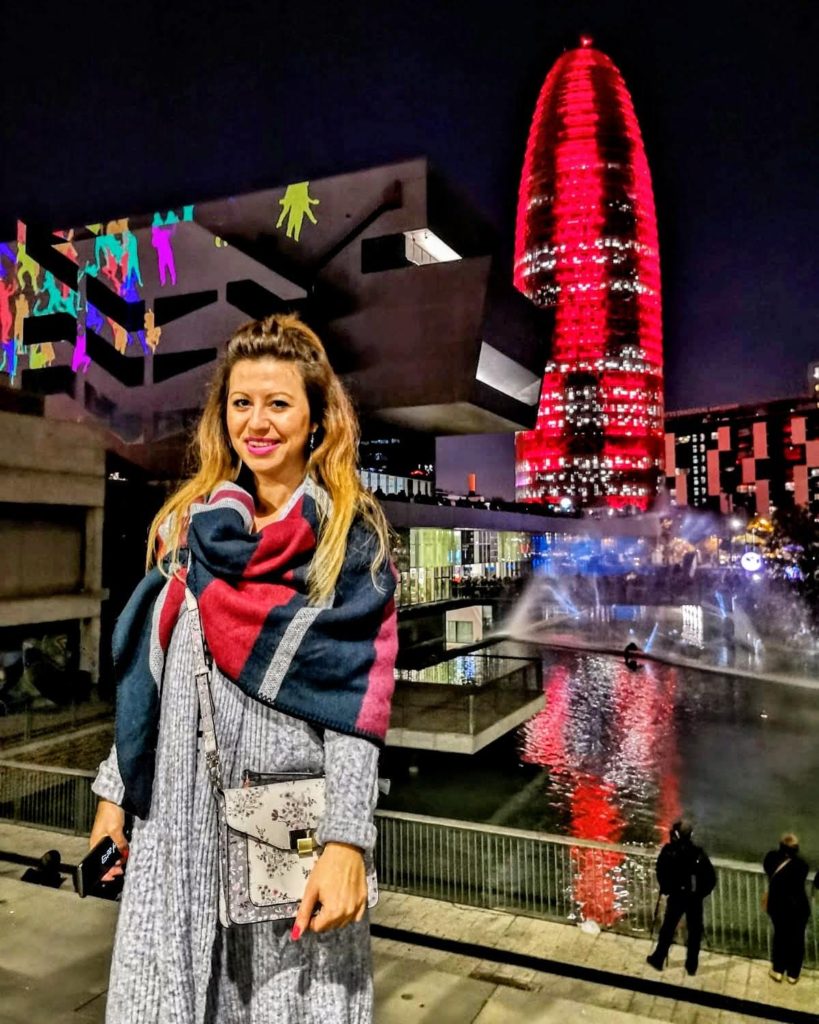
The first edition of the festival was in 2012. It happens in February and it means light. The meaning of the festival is to fight the darkness of the winter with the splendor of the night. The festival takes place in the neighborhood of Poblenou. There are different locations and streets where you can see creative art projects, installations, projections and mapping. There are local and international designers and artists who participate in the festival. It is a cool mixture between the new technologies and art and their reflection on the contemporary life. It lasts three days and it is a good experience which will brighten your dark winter nights.
8. Holi festival Barcelona
Holi festival is also known as the “festival of colors” or the “festival of love”.
It is normally celebrated in the Spring (April or May). The festival signifies the victory of good over evil, the arrival of spring, end of winter, and for many a festive day to meet others, play and laugh, forget and forgive, and repair broken relationships. It is a a free-for-all festival of colors, where people smear each other with colors and drench each other. Anyone and everyone is fair game, friend or stranger, rich or poor, man or woman, children and elders. The frolic and fight with colors occurs in an open park, the destination changes almost every year.
Groups carry drums and other musical instruments, go from place to place, sing and dance. There is a live performance of different schools specified in Indian dances. Every hour there is a countdown and the whole crowd throws away colorful powder in the air until you can’t see anything. It is so much fun! The only problem is that few days after you can still find colors in every hole in your body 😀
Those and many more are the celebrations that make this particular region so unique and special. If you plan your vacation and you want to sense the local spirit – pick the date carefully, some of those experiences will stay in your mind for the rest of your life!
If you want to learn more about the tourist attractions worth visiting, just follow the link to my article about what to visit while in Barcelona.
See you soon, when Travelista goes to…
